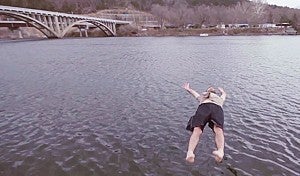Editorial: Don’t promote ‘cold water challenge’
Published 11:12 am Thursday, May 15, 2014
From CaringBridge to Kickstarter, the Internet and social media are great ways to connect well-intended people with everything from helping sick friends to funding up-and-coming entrepreneurs.
This spring, though, social media is at the heart of a dangerous connection: the “cold water challenge.” It’s a stunt that must end now.
Couched as an unofficial fundraiser, one variation has a well-intended participant filmed standing next to a body of water and calling out some friends via the camera to follow his or her lead. The participant then jumps into that frigid lake or river and posts the video to social media. Upon viewing it, friends are either supposed to do the same or donate to their favorite charity.
The danger is obvious. Frigid spring water temperatures pose huge — even deadly — risks for participants.
In fact, 16-year-old Davis Colley drowned Friday night in Eagle Lake in Carver County perhaps while answering a challenge alone, according to news reports. Other reports from Wisconsin, Illinois, Iowa and the East Coast state participants have suffered injuries ranging from broken bones to paralysis. Most reports involve teenagers and 20-somethings. However, older adults are known to participate, too.
The fad is sweeping the nation to the point that schools, public safety officials and even state agencies are urging the challenges end. Here’s what makes the challenges so dangerous:
Local water temperatures are in the mid-40s to mid-50s, well below the 70 degrees at which the body can adequately replace heat dissipated by cold water.
Immersion in such frigid water immediately causes blood pressure, heart rate and adrenaline levels to skyrocket, potentially triggering cardiac arrest and even death. To say nothing of the intense pain and massive shivering, the body’s natural reactions to cold water.
Immersion in cold water automatically causes you to gasp for air; if that is done underwater, it can spur panic and lead to drowning.
Many lakes and rivers are at high levels, plus the water is murky. Both conditions can hide potential dangers such as rocks, debris and drop-offs, especially along riverbanks that already are overflowing.
Again, yes, the Internet and social media can be great tools for having fun and helping people. But using them to advance this cold water challenge stunt isn’t worth the risks — especially in Minnesota, where the water is still frigid and there’s little evidence charities are benefiting.
— St. Cloud Times, May 13



